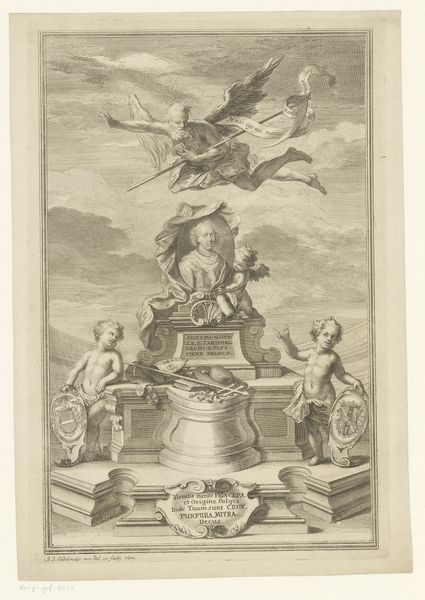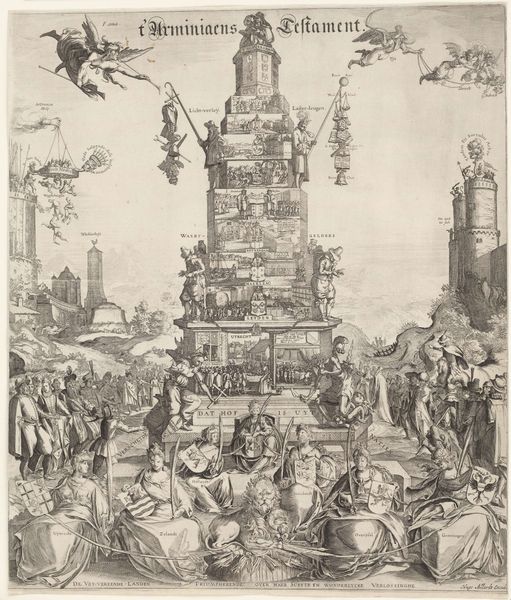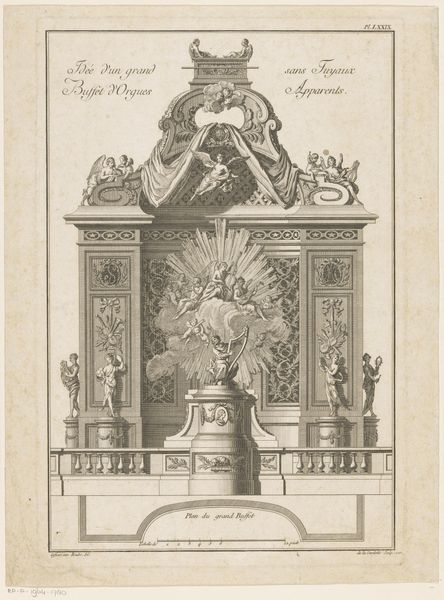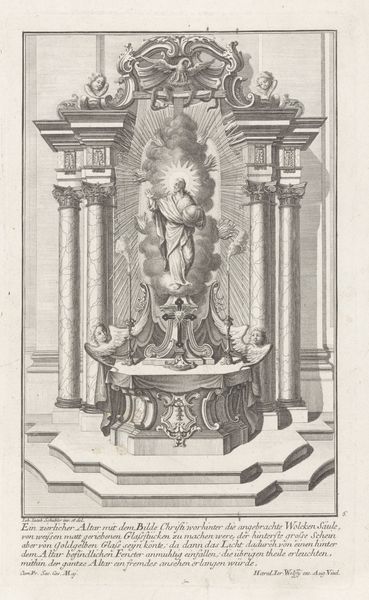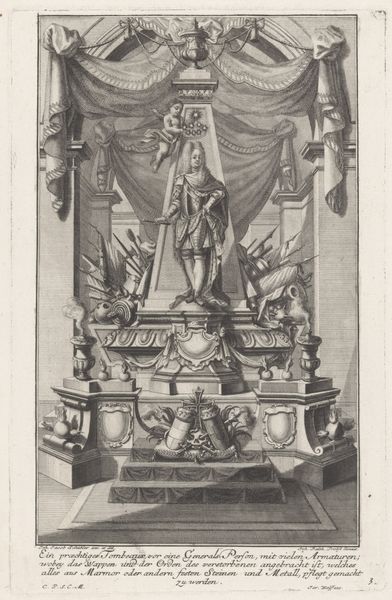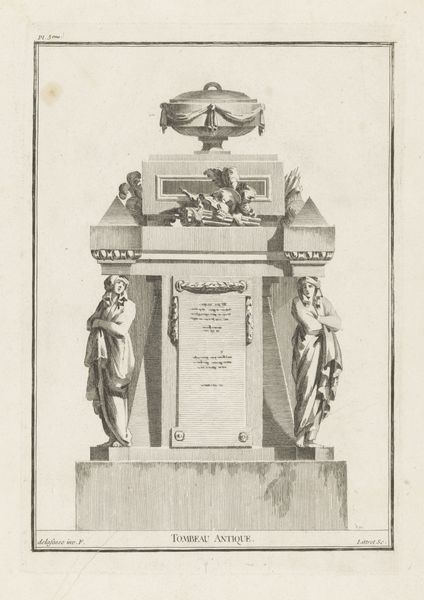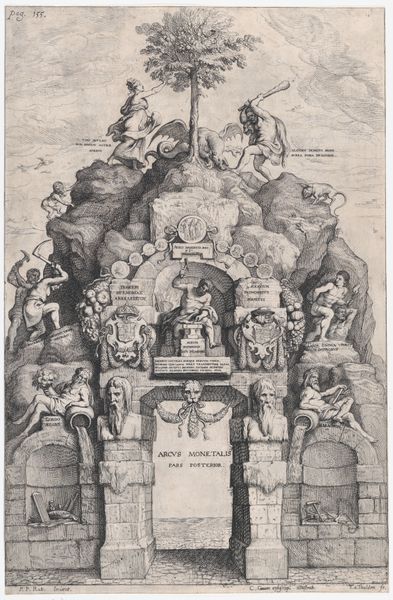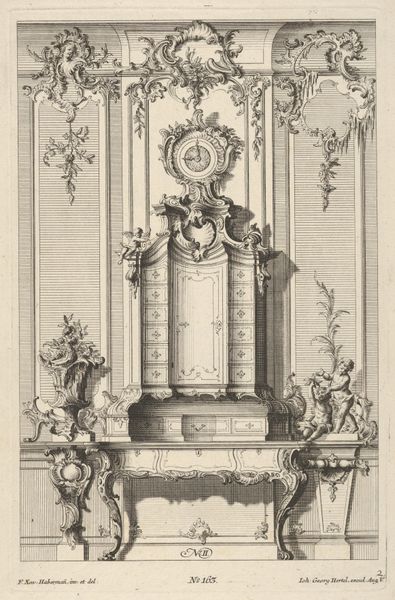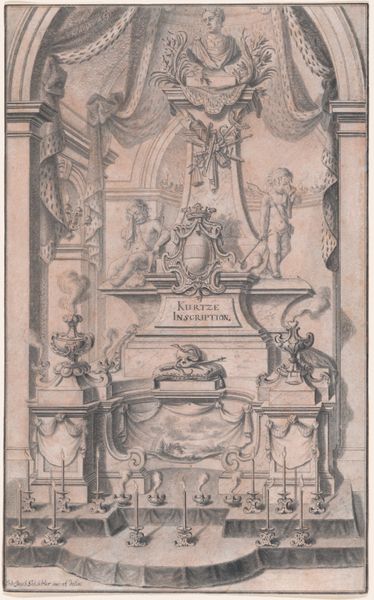
print, engraving, architecture
#
baroque
# print
#
landscape
#
figuration
#
history-painting
#
engraving
#
architecture
Dimensions: 572 mm (height) x 506 mm (width) (bladmaal)
Curator: We are looking at “Herkulesbrunnen in Augsburg”, a print made around 1602 by Jan Harmensz Muller. It depicts a monumental fountain in Augsburg, Germany. It’s rendered in engraving, creating a rather formal atmosphere. What are your initial impressions? Editor: I’m struck by the raw power and mythology embodied in this print! Hercules, in all his virile strength, commands attention at the very top, and feels, in many ways, emblematic of dominant power structures. There’s a clear hierarchy being presented. Curator: Absolutely. It was created during a period of intense civic pride in Augsburg, and the fountain itself became a symbol of the city's wealth and power, particularly during a time when water infrastructure projects reflected not only utility but also civic achievement. Consider the choice of Hercules: how does this hero resonate in Augsburg’s social and political context? Editor: Well, situating Hercules within this context, it begs questions about whose strength and which virtues are being valorized, and at whose expense. He dominates the fountain and seems poised for conquest, maybe subtly celebrating the victory of certain social groups in Augsburg. The visual power dynamics seem linked to the historical power structures. Curator: Exactly! It wasn't just about portraying an impressive fountain; it was about broadcasting Augsburg's place on the European stage through the politics of imagery. Also, the placement of cherubs around what seem to be heraldic shields subtly incorporates symbols of dynastic legacy. Editor: It's like a complex intersection of social statement and artistic expression! Understanding who commissioned and consumed images like these gives us incredible insights into social structures. What do you think are the print’s ties to the artistic currents of its time? Curator: The influence of the Baroque is evident in the dynamic figuration and emotional intensity it aims to convey, yet within the detailed precision possible with engraving. You also see remnants of mannerist aesthetic ideals. Editor: I find the print so indicative of how art could serve the intertwined political and social motivations of the time! I keep thinking of the ways in which public artworks perpetuate particular versions of history. Curator: That is a critical lens to view this work through. It moves our understanding beyond just an artistic representation of a fountain to a historical and socially embedded object with its own role in shaping civic identity.
Comments
No comments
Be the first to comment and join the conversation on the ultimate creative platform.


